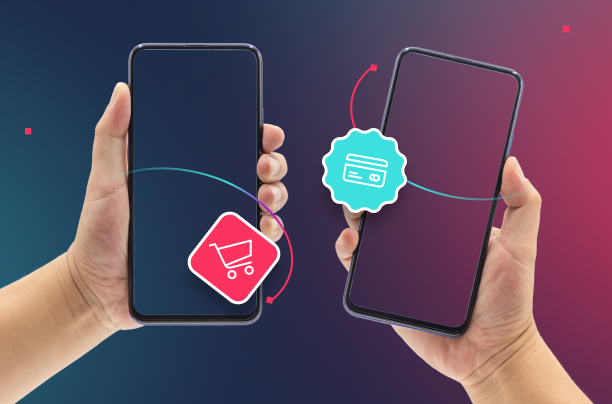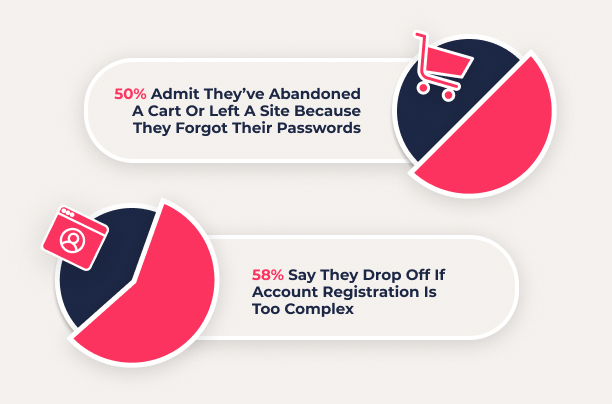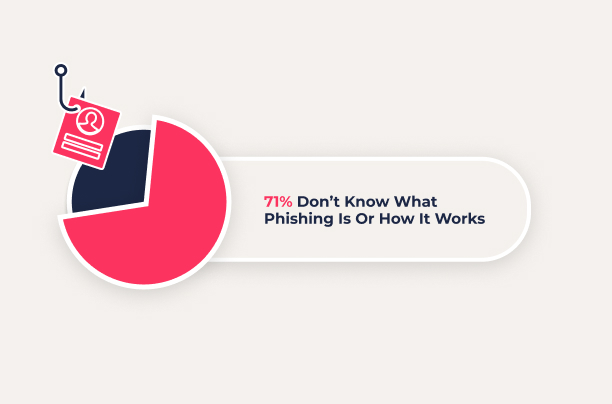As true cyber natives, Gen Z is entering adulthood with a fresh set of demands for the digital world and how it should work. They also have the fastest-growing purchasing power, set to hit $33 trillion and surpass Millennials. So listen up! They’re an easy market to tap if you indulge their sensibilities with one simple trick.
To gain new insights, we surveyed Gen Z about customer experiences that impact your business — from account registrations and logins to password resets and cart abandonment. We drilled down to identify all points of failure that lead them to drop off. Their responses reveal Gen Z won’t tolerate friction-filled logins that stand in the way of what they want to do.
This article highlights data from our in-depth Gen Z report. So let’s consider Gen Z’s perspective. Who are they to dictate how digital experiences should work?
Gen Z: The smartphone generation
Born between 1997 and 2012, Gen Z was initially dubbed iGen due to the profound influence of iPhones and iPads, which first flooded homes in 2007. Young and impressionable, Gen Z was eager to play with touchscreens, entertained and empowered by each tap and swipe.
In their teens, Gen Z used mobiles for non-stop connectivity via text and social media. Based on our survey, they still prefer smartphones. What surprised us most is that 34.6% (1 out of 3 Gen Zers) have multiple mobile phone numbers. They’re so dependent on phones that they want a spare.

The problem with too many mobiles?
Owning two phones may have advantages, but it’s problematic for companies that offer two-factor authentication (2FA) by texting one-time passcodes (OTP). If sent to the wrong phone, the process breaks. Nearly 62% of Gen Zers say they’ve failed to authenticate because they never received an OTP, even after clicking ‘send again.’
Gone in a flash
Our survey revealed Gen Z has the highest drop-off rate of any generation. Nearly 50% admit they’ve abandoned a cart or left a site because they forgot their passwords. And that’s only if they get that far. Up to 58% say they drop off if account registration is too complex.
Giving up so readily reveals a clear generational distinction. A short attention span? Gen Z says no, they’re not flighty but calculating. From a young age, they’ve sifted through tons of data and have developed a discerning filter. They’re acutely aware of countless alternatives a few clicks away. Options are infinite, but time is limited.

Login preferences
Most web apps and services today give customers a variety of login options using Facebook, Google or Apple. To avoid creating a new username and password, 68% of Gen Zers will sign in with a third-party login. This tells us they’re looking for ease and speed, willing to set aside any privacy concerns.
When asked more directly about security versus ease of experience, Gen Z is split. With a slight leaning towards ease, 54% prefer websites that don’t ask for their passwords every time they login. The key takeaway is to give them both secure and easy login experiences.
Riskier behavior

The conundrum: Gen Z makes it more difficult to secure their accounts due to their risky password habits and lack of threat knowledge. Our survey revealed 71% don’t know what phishing is or how it works. Big yikes (as Gen Z would say). It’s alarming in light of the fact that 98% of attacks use social engineering. Companies cannot expect Gen Z to guard against fraud. And the truth is, Gen Z would rather rely on companies to secure their accounts for them.
Pestered by passwords
It’s clear, Gen Z won’t put up with negative login experiences. But we continue to greet all customers by requesting passwords — hard to manage and easy to forget. Plus, Gen Z has the highest failure rates when registering, completing 2FA and resetting passwords. That’s just a few reasons you’re losing Gen Z customers. To get the full picture, read the in-depth report on Gen Z’s demands for passwordless authentication.
Gen Z will go passwordless — with or without you
When biometric-enabled smartphones came out in 2013, Gen Z was curious, most willing to try it. They’ve been using fingerprint or facial ID to unlock their phones for years. Gen Z’s message to companies: “Get with the times!”
So put those biometric scanners to use and securely authenticate Gen Z customers directly on the devices they’re using. After a quick scan, they’re in! One-touch MFA delivers rock-solid security and creates the effortless experiences that Gen Z craves.
Only Transmit Security passwordless authentication completely eliminates passwords from the full customer journey. Our Customer Identity & Access Management (CIAM) platform provides the services you need to simplify logins, remove those points of failure, detect risky activity and keep digital identities secure. You’ll gain happy Gen Z customers, the generation most likely to write rave reviews and influence their friends. When you meet their demands, your success will grow.
Start your passwordless journey
As you begin your passwordless project, consider every aspect of Gen Z’s login frustrations. What triggers them to give up and move on? And how can you fix so much with one solution? Get the insight and tips you’ll need to switch now … or Gen Z will look elsewhere for the fast, free-flowing experiences they know are possible. Get your full report



